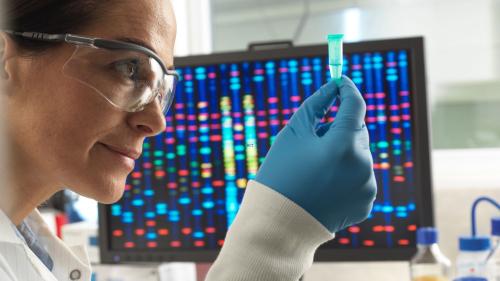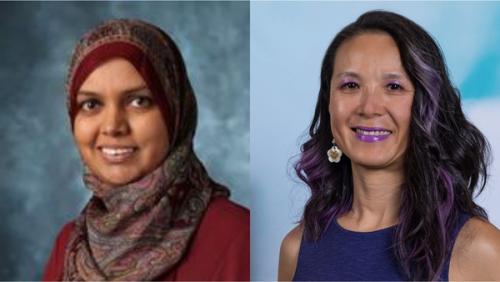
-
Understanding primary immunodeficiency (PI)

Understanding PI
The more you understand about primary immunodeficiency (PI), the better you can live with the disease or support others in your life with PI. Learn more about PI, including the various diagnoses and treatment options.
-
Living with PI
-
Addressing mental health
-
Explaining your diagnosis
- General care
- Get support
- For parents and guardians
-
Managing workplace issues
- Navigating insurance
-
Traveling safely

Living with PI
Living with primary immunodeficiency (PI) can be challenging, but you’re not alone—many people with PI lead full and active lives. With the right support and resources, you can, too.
-
Addressing mental health
-
Get involved

Get involved
Be a hero for those with PI. Change lives by promoting primary immunodeficiency (PI) awareness and taking action in your community through advocacy, donating, volunteering, or fundraising.
-
Advancing research and clinical care
-
Grants
-
IDF surveys
-
Participating in clinical trials
-
Diagnosing PI
-
Consulting immunologist
-
Clinician education

Advancing research and clinical care
Whether you’re a clinician, researcher, or an individual with primary immunodeficiency (PI), IDF has resources to help you advance the field. Get details on surveys, grants, and clinical trials.
-
Grants
What is now the United States Immunodeficiency Network (USIDNET) began in 1992 as a small patient registry enrolling only individuals with chronic granulomatous disease (CGD). It now houses records for 5,485 individuals with many different primary immunodeficiency (PI) diagnoses and has helped inform more than 140 scientific studies and medical conference presentations. For its next iteration, USIDNET is moving to the Children’s Hospital of Philadelphia (CHOP) under the direction of Dr. Kathleen Sullivan and will emphasize genetic as well as clinical data.
A patient registry is like a collection of case studies spanning individuals who have a health condition, environmental exposure, or other feature in common. Registries are structured as vast databases, with standardized fields that house observational data—for example, laboratory test results, diagnostic codes, or survey responses—for each enrolled individual. The number of individuals in a registry is usually more than any single medical center would see for the condition of interest, making registries invaluable resources for researchers—especially if the condition is rare.
Because registry data fields are standardized, researchers can look for patterns across patients seeing different doctors at different sites of care. Depending on its design, a registry’s data can reveal the natural progression of a condition, a difference in outcomes between treatments, disparities in care between patient subpopulations, and any number of other correlations and trends. Research powered by registries often gives clinicians a more complete understanding of a condition and can generate hypotheses for more direct studies like clinical trials.
For example, one of the first papers published with USIDNET data had a profound impact on how clinicians treat CGD. The analysis found that almost 70% of 368 individuals with CGD experienced pneumonia and that the infecting microbe was most often Aspergillus ssp., a type of fungus. While individuals with CGD were routinely prescribed preventative antibiotics to combat bacterial infections, antibiotics are not effective against fungi. The prevalence of fungal pneumonia led researchers to investigate using an antifungal targeting Aspergillus ssp. preventatively in individuals with CGD, something that has since become the standard of care.
The original USIDNET registry is no longer collecting data, but the existing data continues to help researchers answer important scientific questions. A 2022 paper analyzing registry data from 231 individuals with X-linked agammaglobulinemia (XLA) found that those who were living were diagnosed at a significantly younger age compared to those who were deceased. Individuals without lower respiratory tract infections (LRTIs) were also significantly younger at diagnosis than individuals with LRTIs. One explanation for these correlations is that earlier XLA diagnosis reduces the chances of the patient developing an LRTI, and therefore, reduces associated mortality. If further research confirms that early diagnosis reduces mortality, that is a powerful argument for XLA to be included in newborn screening nationwide.
The new version of USIDNET at CHOP will incorporate several new features. Instead of requiring manual data entry, it will use a semi-automated process to extract anonymized data from participating medical centers. USIDNET data will also be used to support genetic testing worldwide. Because of the emerging use of genetic testing for patients, USIDNET will feature a “genetic matchmaking” service. The service will allow clinicians who have patients with the same or similar PI-causing genetic variants to connect and compare notes.
Although USIDNET is moving to CHOP, IDF remains actively involved with patient registries. Along with other patient organizations, IDF hopes to establish a patient data trust that will encourage registries and clinical studies enrolling individuals with PI to use a global unique identifier (GUID). A GUID is like a research social security number. It’s an ID number unique to each person that allows researchers to link data from the same person across multiple registries and studies without sharing information that identifies them, such as their name or actual social security number. The data trust will also act as a backup entity to hold and secure data if a member registry ceases to operate.
Said Christopher Scalchunes, IDF’s Vice President of Research, “IDF is taking the lead with other patient groups to ensure that all registries in our space work together and share data, and that the dissemination of research results performed using these registries is appropriately shared with our community.”
Topics
Related resources
Sign up for updates from IDF
Receive news and helpful resources to your cell phone or inbox. You can change or cancel your subscription at any time.





The Immune Deficiency Foundation improves the diagnosis, treatment, and quality of life for every person affected by primary immunodeficiency.
We foster a community that is connected, engaged, and empowered through advocacy, education, and research.
Combined Charity Campaign | CFC# 66309




